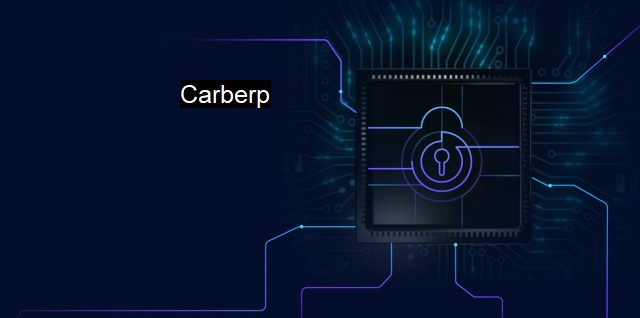What is Carberp?
Unleashing Chaos on the Financial Sector: The Reign of Carberp Banking Trojan and Its Elusive Tactics
Carberp is a notorious malware identified as a Trojan, and it largely targets and attacks banking systems. This Trojan malware was originally developed and discovered primarily to infiltrate private networks and steal sensitive information, such as usernames and passwords, especially those linked to online banking. Most malicious software hackers uses the Carberp Trojan to manipulate and exploit and often result in altering banking transactions, credit card numbers and other personal user information.The discovery of Carberp brought about a new dimension but at the same time, a considerable challenge. It was found out in 2012 by Russian antivirus company, Dr.Web. Initially, Carberp at first glance looked like a typical Trojan horse characterized by bootkit functionality. This bootkit integrated into the Computer's BIOS, enabling it to generate attacks that traditional antivirus programs cannot recognize or combat. This resulted in an immediate stealthy loading and initialization of the Trojan malware into the system memory once the PC boots, hence, dealing with it was a pressing issue.
Diving deeper, the distinctive feature of this Trojan is its sophistication. Carberp inserts itself into the browser and establishes manipulative control whilst the user remains entirely oblivious to this infringement. It can inject fake web pages into legitimate websites and record keystrokes of the infected victim. Afterwards, it transmits all keyed data to a command and control (C&C) server controlled by hackers. This server is used to store stolen data and dispense commands to infected computers.
Carberp could perform "Man in the Browser" attacks. It facilitated invalidation of two-factor authentication and transaction signing systems by including additional fields to be filled out by the victim during an online banking session. Thus, the hacker received not only the victim's login details but also the components needed to circumnavigate any additional or opponent authentication requirements.
Carberp's source code being leaked on the internet was a shocking development in cybersecurity. It predisposed cyber risk for many banking systems and companies. The confidential information that was considered secure in banking systems now remained at greater risk than before. It gave tattooed attention from most anti-malware corporations on curbing this risk, especially regarding personal financial information.
Antivirus software are always reformulated and tweaked to combat such threats. Old types of antivirus software were not enough to handle this highly sophisticated malware, leading to the development of more advanced antivirus technologies. Behind firewalls and intrusion prevention systems, protective success against this Trojan depends considerably on behavioural and heuristic analysis technologies in antivirus solutions that can predictively ascertain potential malicious codes.
Security applications were brought forth to curb Carberp's infiltration. They proved immutably beneficial when complemented by standard, network-level diagnostic and prevention measures. Maintaining regular updates and security patches in your systems and software, practising secure browsing, never downloading or opening suspicious files and emails, and employing complex and unique passwords across various sites can act as combative approaches to resist the Carberp Trojan and similar threats.
Training and educating individuals in maintaining practical 'cyber hygiene' also plays a crucial role—it encourages better decision-making regarding the opening and downloading of attachments or clicking indiscriminate URLs. It positions the user to take greater control about the unforeseen and unsuspectingly dangerous jungle of internet threat, particularly from Trojans, like Carberp, and is as much a solution as technological advances.
One cannot underestimate the scale of threat presented by Carberp Trojan. Its mere existence signifies the need for continued vigilance and increased spend on cybersecurity nationwide. Although antivirus software is fit to combat such issues, there is always the potential for new types of cyber threats to emerge. Immediate and routine coordination in organized identification of unique threats, adoption of recent innovations, advancements of the current solutions needs to be undertaken, to ensure banking platforms remain impervious from such insurmountable threats such as Carberp.

Carberp FAQs
What is Carberp?
Carberp is a sophisticated Trojan malware that is designed to steal sensitive information from computer systems.How does Carberp work?
Carberp is usually spread through spam emails containing malicious links or attachments. Once executed, it injects itself into system processes and begins to monitor and steal sensitive information such as login credentials, bank account details, and credit card numbers.What are the potential consequences of a Carberp infection?
The consequences of a Carberp infection can be severe and could include financial loss due to stolen banking and credit card details, identity theft, and unauthorized access to personal or corporate data.How can I protect my computer from Carberp?
To protect your computer from a Carberp infection, you should ensure that your antivirus software is up to date and that you exercise caution when opening email attachments or clicking on links. Additionally, it is recommended to keep your operating system and other software applications regularly updated with the latest security patches.| | A | | | B | | | C | | | D | | | E | | | F | | | G | | | H | | | I | | | J | | | K | | | L | | | M | |
| | N | | | O | | | P | | | Q | | | R | | | S | | | T | | | U | | | V | | | W | | | X | | | Y | | | Z | |
| | 1 | | | 2 | | | 3 | | | 4 | | | 7 | | | 8 | | |||||||